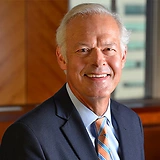Art piracy has captured the news. Scotus has decided Andy Warhol’s artwork was not a fair use of a photograph of Prince and a Manhattan jury found that Ed Sheeran didn’t pirate the Marvin Gaye classic “Let’s Get It On”. Sheeran played his guitar and sang in the courtroom to show the jury that his Grammy-winning song “Thinking Out Loud” didn’t steal a note. (How could you possibly cross-examine a charismatic rock star serenading the jury?) The Warhol case also takes artful twists as Justices Sotomayor (for the majority) and Kagan (in dissent) illustrated (!) their opinions with artwork of Prince, a Campbell Soup can, Marilyn Monroe, and even three paintings of Venus by Girogione, Titian, and Manet. The Warhol case may go down as the most visually and supremely colorful in the history of the Supreme Court.
Lest we spoil the art with too much legal jargon, let’s just say that, whether it’s a Warhol or a Sheeran, our technology is revolutionizing the creation and re-creation of visual imagery, music, literature, and art in all its forms. While original creators have constitutional and intellectual property rights in their creations, these rights (like all rights) have real and practical limits. One big limit is the “fair use” exception for non-commercial, educational use. Another is new artwork that doesn’t copy but “transforms” earlier artwork, transformation being a matter of degree. Yet another exception is where, as in the Ed Sheeran case, the claimed piracy is of something so common out there that it wasn’t “original” in the first place.
Most artwork of course doesn’t reach celebrity status, like Warhol or Sheeran.
So, from the perspective of workaday, non-celebrity makers of art, what to make of these high-profile cases? The reality is that it’s one thing to have rights in creative work, and it’s quite another to enforce your rights. Art pirates never have to sail away from their computers to travel virtually all over the wide world plundering creative work with tech and AI. Most creatives would rather devote creative energy to work rather than expensive and lengthy litigation.
The good news is that the creative arts have the power of community friends. America ‘promotes the progress of arts and sciences’ (see Article One of the Constitution) through public advocacy, arts organizations, museums, public and private funding, educational institutions, businesses, and countless givers of time, talent, and treasure.
Art in America is thriving. Our technology by itself won’t instill and promote the values that make humans human. This is the job of the humanities, along with our freedoms of thought and expression and our ability to see the humanity in each other.

